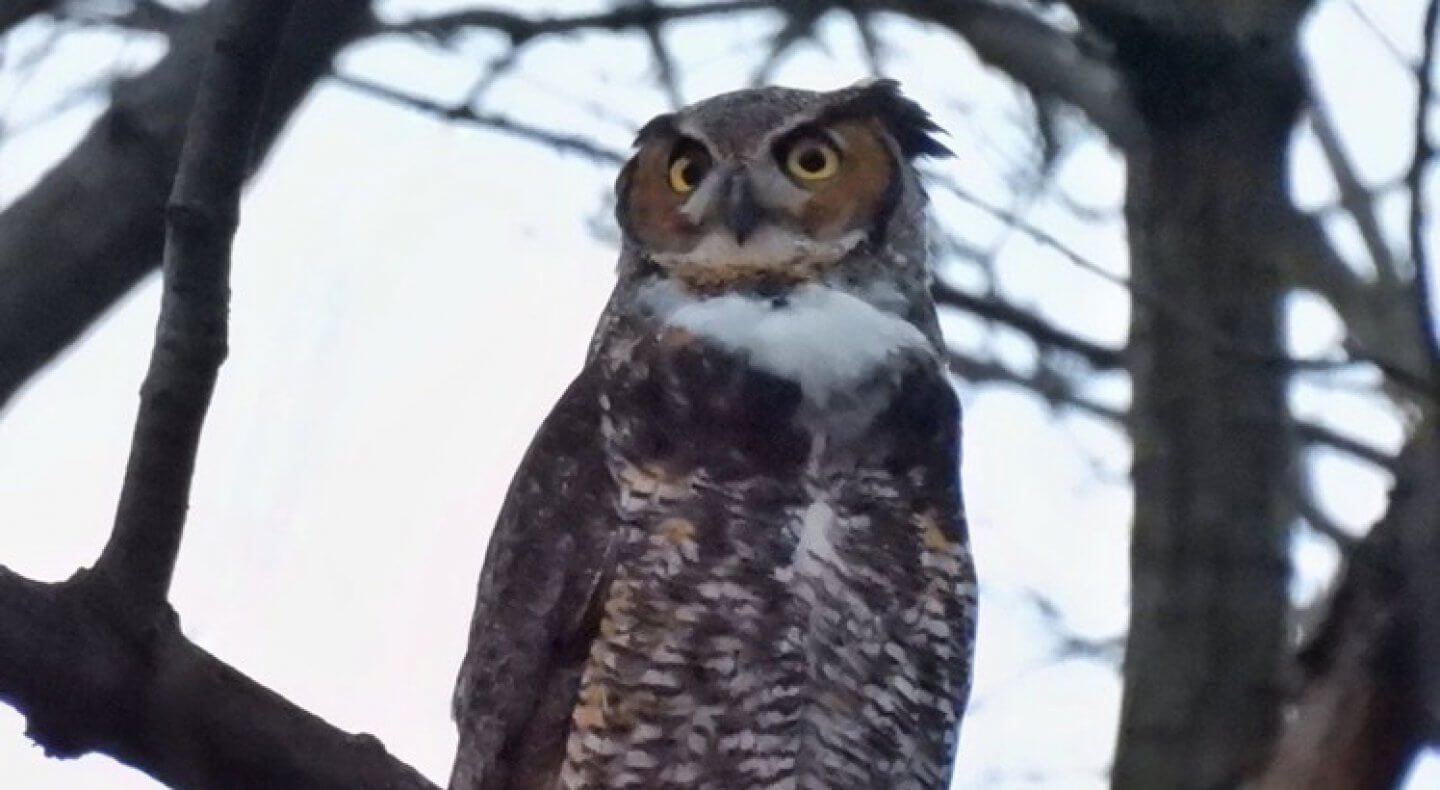Great Horned Owl
January 26, 2022If the winter woods seem a bit lifeless, think again- Great Horned Owls hatch their young during the winter so they are very active hunting and defending their nest this time of year. Great Horned Owls, like most owls, are considered nocturnal so keep an eye out for these elusive raptors at edges of open areas at dusk and listen for their deep “hoo-hooing” (audio below) while they carry out their child-rearing activities.
These relatively common nocturnal birds are rarely seen but they are often heard in many habitats throughout Michigan (& North America). These creatures are highly adaptable and built for hunting. Their large eyes are designed for night-vision and don’t move in their sockets, but their heads swivel over 180 degrees! Great Horned Owls have sensitive hearing, thanks in part to facial disc feathers that direct sound waves to their ears, and they have short, wide wings covered with soft feathers that make them nearly inaudible in flight while they track a wide array of prey (birds and mammals, including skunks and porcupines).
Keep your eyes and ears open on your evening hikes for this beautiful and mysterious denizen of the northern woods.
(photo by Robert Yochem)
Categorised in: Field Notes, Uncategorized
